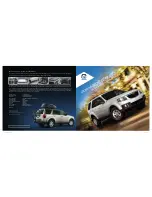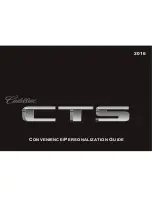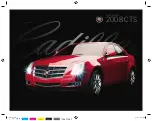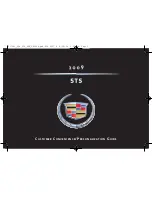STARTING AND OPERATING
15
road surfaces only. Do not exceed 25 mph
(40 km/h).
This transfer case is designed to be driven in
the four-wheel drive position (4WD AUTO) for
normal street and highway conditions on dry
hard surfaced roads.
For variable driving conditions, the 4WD AUTO
mode can be used. In this mode, the front axle
is engaged, but the majority of the vehicle's
power is sent to the rear wheels. Four-wheel
drive is automatically engaged when the vehicle
senses a loss of traction and more torque is
transferred to the front axle.
In the event that additional traction is required,
the transfer case 4WD High and 4WD Low
positions can be used to lock the front and rear
driveshafts together, forcing the front and rear
wheels to rotate at the same speed. The 4WD
High and 4WD Low positions are intended for
loose, slippery road surfaces only and not
intended for normal driving. Driving in the 4WD
High and 4WD Low positions on hard-surfaced
roads will cause increased tire wear and
damage to the driveline components. Refer to
“Shifting Procedures” in this section for further
information on shifting into 4WD High or 4WD
Low.
The instrument cluster alerts the driver that the
vehicle is in four-wheel drive, and the front and
rear driveshafts are locked together. The light
will illuminate when the transfer case is shifted
into the 4WD High position.
When operating your vehicle in 4WD Low, the
engine speed will be approximately four times
that of the 4WD High position at a given road
speed. Take care not to overspeed the engine.
Proper operation of four-wheel drive vehicles
depends on tires of equal size, type, and
circumference on each wheel. Any difference
will adversely affect shifting and cause damage
to the transfer case.
Because four-wheel drive provides improved
traction, there is a tendency to exceed safe
turning and stopping speeds. Do not go faster
than road conditions permit.
Shifting Procedures
4WD High AUTO To 4WD High PT Or 4WD High
PT To 4WD High AUTO
Shifting between 4WD High AUTO to 4WD High
PT can be made with the vehicle stopped or in
motion. The preferred shifting speed would be 0
to 45 mph (72 km/h). With the vehicle in
motion, the transfer case will engage/
disengage faster if you momentarily release the
accelerator pedal after completing the shift. Do
not accelerate while shifting the transfer case.
Apply a constant force when shifting the
transfer case lever.
NOTE:
Do not attempt to make a shift while only the
front or rear wheels are spinning. The front
and rear driveshaft speeds must be equal for
the shift to take place. Shifting while only the
front or rear wheels are spinning can cause
damage to the transfer case.
Delayed shifts out of four-wheel drive may be
experienced due to uneven tire wear, low or
uneven tire pressures, excessive vehicle
loading, or cold temperatures.
Shifting effort will increase with speed, this is
normal.
During cold weather, you may experience
increased effort in shifting until the transfer
case fluid warms up. This is normal.
3
20_JL_OM_EN_US_t.book Page 15


















